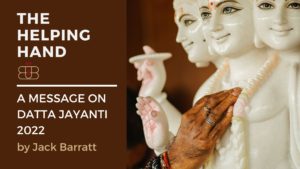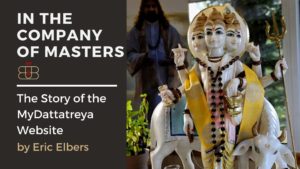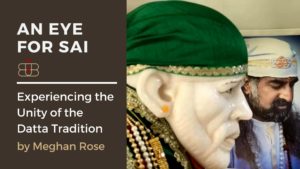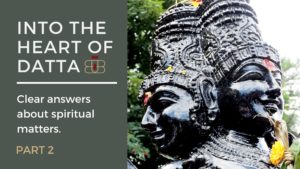Rishi from the Himalayas
Overview and Significance
THE NANDINATHA SAMPRADAYA: FROM RISHI TIRUMULAR TO THE NAMELESS RISHI FROM THE HIMALAYAS
Seek the Nathas who Nandinatha’s grace received. First the Rishis four, Shivayoga the holy next, then Patanjali, who in Sabha’s holy precincts worshiped. Vyaghra and I complete the number eight. Through instruction imparting, Malangan, Indiran, Soman and Brahman, Rudran, Kalangi and Kanchamalayam come as my disciples in succession.
Rishi Tirumular, Tirumantiram 67. tm
What Is Hinduism’s Natha Sampradaya?
The Natha Sampradaya, ‘the Masters’ way,’ is the mystical fountainhead of Shaivism. The divine message of the eternal truths and how to succeed on the path to enlightenment are locked within the Natha tradition. Natha means ‘lord or adept,’ and sampradaya refers to a living theological tradition. A Natha is a knower of the Self who has mastered the intricacies of his inner bodies and states of mind. Through the millennia, Nathas have been conveyors of esoteric knowledge and wielders of siddhis, powers of the soul. Natha Siddhas delve deep into the mind, invoking Shiva’s grace and controlling the kundalini shakti.
The roots of this venerable heritage stretch back beyond recorded history when awakened Natha mystics worshiped the Lord of lords, Shiva, and in yogic contemplation experienced their identity in Him.
The Natha Sampradaya has revealed the search for the innermost divine Self, balanced by temple worship, fueled by kundalini yoga, charted by monistic theism, illuminated by a potent guru-shishya system, guided by soul-stirring scriptures and awakened by sadhana and tapas. Thus has it given humanity the mechanics for moving forward in evolution
Life History
FROM TIRUMULAR TO THE HIMALAYAN RISHI
Having achieved perfect enlightenment and the eight siddhis at the feet of Maharishi Nandinatha in the Himalayas, Rishi Tirumular was sent by his Satguru to revive Shaiva Siddhanta in the South of India. Finally, he reached Tiruvavaduthurai, where, in the Tamil language, he recorded the truths of the Shaiva Agamas and the precious Vedas in the Tirumantiram, a book of over 3,000 esoteric verses. Through the centuries, the Kailasa mantle was passed from one Siddha yogi to the next. Among these luminaries was the nameless Rishi from the Himalayas (ca. 1770-1840), the first known Siddha of the Nandinatha Sampradaya in modern times who in the late eighteenth century entered a teashop in a village near Bangalore, sat down, and entered into deep samadhi. He did not move for seven years, nor did he speak. Streams of devotees came for his darshan. Their unspoken prayers and questions were mysteriously answered in dreams or written, paper messages that manifested in the air and floated down. Then one day, Rishi left the village, later to pass his power to Kadaitswami.
The footsteps of the hundreds of disciples of the disciples of Tirumular have been lost in the shifting sands of time. Neither names nor biographies for the many Gurus who lived in the centuries between 200 BCE and the late 1700s AD, when the Rishi from the Himalayas appeared in Bengaluru (Bangalore), are known. Walking the 2,200 kilometers from the Himalayas to Bangalore was not merely arduous; it could be life-threatening. It required enormous stamina, and it called forth a simplicity few could sustain.
Tea shops were gathering places back then, the traveler’s place of respite and rejuvenation. Here a shopkeeper prepares hot tea, deftly pouring the boiling brew back and forth between two cups held a meter apart to cool it to the perfect temperature. The Rishi from the Himalayas became a legend when he sat for seven years in a tea shop without moving. People came from far and near to witness this miracle, so many that a brass railing had to be installed to keep the crowds from touching him and disturbing his meditation. The tea shop eventually became a shrine, as people came to see a spiritual giant of remarkable yogic powers. Those powers were nowhere more evident than in the magical way that prayers were answered in his presence. Sometimes answers fell from above on small pieces of paper.
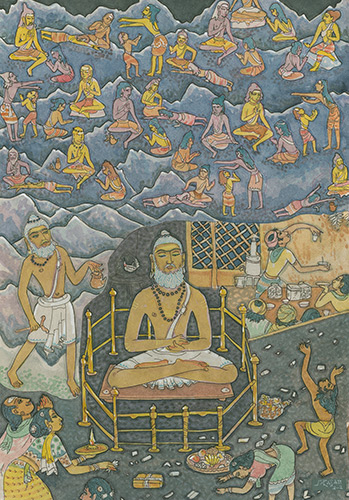
Tradition and Gurus
The Nandinatha Sampradaya [Tradition] earliest known exemplars were Maharishi Nandinatha (ca 200 BCE) and his disciples Patanjali (author of the Yoga Sutras) and Sundaranatha (known as Tirumular in South India, whose Tirumantiram comprehensively expounds the path of Shaiva Dharma). In recent times this ancient lineage of masters and the Nandinatha Sampradaya continues through the Kailasa Paramparâ [series of Gurus] — the first recently known Siddha being the ‘Rishi from the Himalayas,’ [ca 170-1840] so named because he descended from those holy mountains. In South India, he initiated Kadaitswami (ca 1810-1875), who, in turn, initiated Chellappaswami (1840-1915). Chellappan passed the mantle of authority to sage Yogaswami (1872-1964), who in 1949 initiated Satguru Sivaya Subrimunyaswami. He appointed as his first successor Satguru Bodhinatha Veylanswami, the current head of the Hindu Monastery on the island of Kauai.
Teachings
Pilgrims from all over India reached the tea shop in Bangalore on the 3,000-foot-high Mysore Plateau. Many said they had been called there, having seen Rishi in a dream or vision. Prasad, the teashop owner, knew a thousand such stories and delighted in telling them to whoever would listen. The pilgrims came with problems more often than not, and always they were helped; none was denied. Few could claim that Rishi had answered their prayers himself, for no one felt that kind of personality in him. He wasn’t there in that sense. And yet, things happened around him that didn’t happen elsewhere.
In Rishi’s presence, the mind was so clear for some pilgrims, so calm, that answers often became self-apparent. Even problems that had gone unsolved for years dissolved in minutes before him. The answers came from within the pilgrim. The responses were more elusive for others, coming after they left his presence, even days later. A visitor would pray or merely think over his life while sitting before Rishi and then be on his way. Whatever the question or problem or need, the answer soon came, clear as a bell—in a scrap of conversation overheard on the street, in a song sung, by a response heard in school, or simply from intuition, from the inner sky. Sitting with Rishi opened the mind to its depths, and everything adjusted itself naturally. It wasn’t the answer itself, but, in whatever way it hit the mind, the impact of it, that showed where it came from—it was straight to the point in a roundabout way, said but unsaid, seen but unseen, like Rishi himself. Invariably the answer hit the nail on the head, with incredible power, leaving no room for doubt. And that power did not diminish over time, as everyday thoughts do, but grew in certainty and clarity.
Sacred Practices/Sadhana
Many teachings, books, videos, courses, pujas, and meditation instructions are available at the website of Kauai’s Hindu Monastery. See www.gurudeva.org
Miracles
NOTES OUT OF THIN AIR
Then there were the notes. On rare occasions, a pilgrim would receive a note, a message out of thin air, answering problems he had brought, silently, before Rishi. These notes appeared in the room where he sat, written on a scrap of paper. A rustling sound as it hit the floor was all anyone knew of where the note came from. These messages were never personal, never addressed to anyone, and didn’t answer questions specifically. Instead, they spoke in general terms, talking around the subject and usually explaining the way things were done in the old days.
If a mother was worried about the marriage of her daughter, the note might explain a bit about how marriage was looked at in the Vedas, what the ancients looked for in a family, why a man marries, why a woman marries, how to tell if the choice is good, and so on. Though brief, the notes were more than enough to show what was needed and why. Because they spoke to everyday problems, their content was seldom remarkable. Similar statements could be found in any Hindu scripture. Indeed, the notes occasionally quoted scripture, especially the Upanishads. But the way they were written, and the medium of the message, had a remarkable effect on the one who received it. The language of the notes was usually Kannada, though Telugu, Tamil, Hindi, Sanskrit—and even German, on one occasion—were also used.
A widowed businessman came from Tuticorin, deep in the South of India, after finishing his career and leaving the estate in his son’s hands. Bringing no plans, no problems, no needs, he simply came to see Rishi. A note appeared while he was there, referring to the four stages of life: brahmacharya, grihastha, vanaprastha, and sannyasa (student, householder, older advisor, and renunciate)—which are the natural patterns of the soul’s earthly vitality and karma. The man captured the subtle direction and entered a life of service in a nearby ashram, visiting Rishi often.
Contemporary Masters
Satguru Bodhinatha Veylanswami, Kauai Aadheenam, Hawaii
Holy Sites and Pilgrimages
Kauai Hindu Monastery, 107 Kaholalele Road, Kapaa, Hawaii, 96746-9304
USA E-mail [email protected]
Bibliography
Sources:
- The Guru Chronicles, the Making of the First American Satguru – Swamis of Kauai’s Hindu Monastery
- Dancing with Shiva, Hinduism’s Contemporary Catechism – Satguru Sivaya Subramuniyaswami


